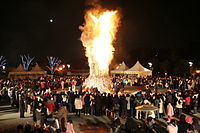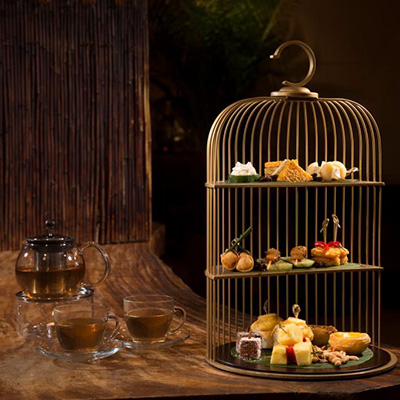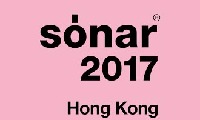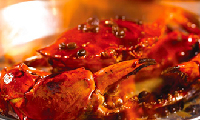Korean Traditional Festivals (Hangul: 한국전통축제) are the Korean national and local festivals that have been continued among Korean people throughout its long history. Korean traditional festivals are largely based on its agricultural rituals and myths. "Seollal, New Year's Day" and "Chuseok, Harvest Festival" are regarded as the biggest festivals.
##Festivals in Summary: Events, Date, significance and Food
*All traditional festival dates are in accordance to the lunar calendar.
##Festivals by Lunar Month
1st Month
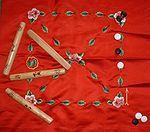
Yunnori, traditional Korean game on Seollal
- Seollal (Hangul: 설날) is one of the biggest holidays in Korea along with Chuseok (also known as the Korean Thanksgiving day). Seollal is the New Year’s Day in lunar calendar. The word “seol(Hangul: 설)” is originated from the word.which means unfamiliar, implying newness of a new coming year. It is unknown when Koreans began celebrating Seollal, but rituals of the festival are estimated to go back to the 6th century. On Seollal, Koreans demonstrate their respect to parents and elders in the family, as well as deceased ancestors through Sebae (Hangul: 세배, New Year’s Bow) and Charye (hangul: 차례, an ancestral ritual). Also, elders give money or present to a person who did Sebae in return of showing their respect. Koreans almost always wear Hanbok (Hangul: 한복, traditional clothing) on this day and eat Tteokguk (Hangul: 떡국, traditional soup made of rice cake) and Yakwa (Hangul: 약과) in addition to playing a traditional game like.With passing of Seollal, Koreans add one year to their ages.
-
See also: East Asian age reckoning
- Daeboreum (15th day of 1st month)
- Daeboreum (Hangul: 정월대보름) is a day celebrating the first full moon of the new year. Traditionally, group of people plays a traditional game called Geuybulnori (Hangul: 쥐불놀이) a night before or on the day of Daeboreum. Farmers burn hays of dry grass on ridges between the rice fields while other people whirl around few cans with a lot of holes which allowed charcoals to fire inside the cans. Practically, people believed that the fire could help killing harmful insects near the rice fields, and ashes of the fire could fertilize the ground to help the year's farming. Also, charcoals were used to blaze a fire.
2nd Month
- Meoseumnal (Hangul: 머슴날) is a traditional festival for servants. 'Meoseum' (Hangul: 머슴) means servants and slaves, and 'nal' (Hangul: 날) means a day in Korean. This was a day that masters allowed their servants and slaves to celebrate a day with extra food, singing, and dancing before farming started in February, back in the day when slaves were exist in Korea. The masters also provided enough money for the servants so that the servants does not need to spend their money in the day. This festival was designed by masters to encourage the servants and slaves to work better on the year's farming. The servants usually made traditional snack called Songpyeon (Hangul: 송편, a variation of Tteok, traditional rice cake) with the grains used during Daeboreum and ate them according to their age, because they believed that this could bring them a good luck. For instance a 10-year-old servant would eat ten Songpyeon. In Euiryong-gun, Yangsan-gun, or Gyungsangnam-do, different territories of Korea, the day was regarded as coming-of-age day. Unfortunately, this festival is not celebrated any more since the Meoseum system was abolished in Korea, and it is even rare to see a person who remembers this festival.
- Yongdeungje (Hangul: 영등제) is a day to celebrate Yongdeung (Hangul: 영등, the god of wind) which is believed to descend on earth on the first day of February and ascend on the 20th. The festival is mostly celebrated in Jeju Island and Youngnam district. While Yongdeung is on earth, it is believed to bring strong wind. Thus, people in the sectors strongly affected by wind such as fishery and farming perform an ancestral ritual, Jesa (Hangul: 제사) in order to appease the wind god. If it rains or is cloudy on that day Yongdeung ascend, people think the year will be a fruitful one.
3rd Month
- Samjinnal (3rd day of 3rd month)
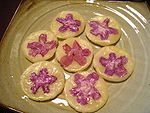
Jindallae(Azalea) Hwajeon
- Samjinnal (Hangul: 삼짇날)’s origin is unknown but it is a day of celebrating the coming of spring. Thus Samjinnal,the date with two 3s is considered as a lucky day with full of good and evil spirit. This is the day when the barn swallows return, snakes awaken from the winter sleep, and butterflies begin to fly. It is thought as good luck if one sees a snake on this day. Archery, cockfighting, flower viewing, and fortune telling are also enjoyed by the people celebrating this day. People would eat rice pancakes with flower topping known as Hwajeon (Hangul: 화전) and noodles, drinking Dugyeonju (Hangul: 두견주, Azalea wine).
4th Month
- Hansik (105 days after winter solstice)
- One of the biggest four traditional festivals along with Seollal, Dano, and Chuseok, Hansik (Hangul: 한식) notifies the start of the farming season. During the festival, Koreans visit their ancestral graves for offering rite and cleaning and maintenance. Jesa (Hangul: 제사), a traditional ritual is performed with the expectation of a fruitful year at the grave. Traditional food is prepared for the Jesa and shared with families and neighbors after the ritual has been performed. It is known that on Hansik, people should eat only cold food but people easily ignore it these days. Ssuktteok (Hangul: 쑥떡, a variation of Tteok, mugwort cake), Ssukdanja (Hangul: 쑥단자, mugwort dumplings), and Ssuktang (Hangul: 쑥탕, mugwort soup) are the representative food for Hansik.
- Chopail (8th day of 4th month)
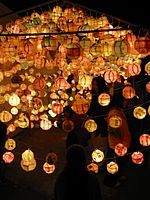
Lotus Lanterns Festival on Chopail
- Also known as Buddha’s Birthday, people celebrate the founder of Buddhism. The main event of this day is merrymaking with lantern parades. Before this event, families build lanterns in accordance to the number of their family members. On the celebration day, people lit the lamps and hang them outside their homes. These lanterns are made in shapes of flowers, fishes, turtles, fruits, and many others. People also enjoy eating different types of Tteok, dumplings, and special dishes made of fish.
-
See also: Buddha's Birthday, Korea
5th Month
- Dano (5th day of 5th month)

Dano painted by Hyewon Shin Yun-bok
- Dano (Hangul: 단오) is a traditional festival in celebration of spring and farming. On this day, women wash their hairs in water boiled with sweet flag (known as Changpo (Hangul: 창포) in Korea) and men wear iris roots around their waist to ward evil spirits. Main activities include folk games such as Ssireum (Hangul: 씨름, Korean wrestling match) and swing. Also, as it is a time when the summer comes, people present a fan to friends or neighbors wishing that they can beat the heat that summer. On Dano, People eat traditional foods including a variety of Tteok and other herb rice cakes.
- UNESCO has designated the “Gangneung Dano-je Festival (Hangul: 강릉단오제)” as a “Masterpiece of the Oral and Intangible Heritage of Humanity.”
6th Month
- Yudu (Hangul: 유두) is a traditional festival celebrated in the hopes of getting rid of ghosts and bad spirits. On the Yudu, people would go to creeks that run to the East and bathe and wash their hair in the past. It was a performance and ritual of washing away the bad spirits. Then people would perform rituals to the farming god with newly harvested fruits hoping for a fruitful harvest. People also eat noodles and it is believed that by eating these noodles people will live a prosperous and long life.
- Sambok (between 6th and 7th month)

Samgyetang, Chicken soup on Sambok
- Sambok (Hangul: 삼복) is thought to be the hottest day of the summer. In order to get through the hottest day of the year, people eat fresh fruits, liquor, and other traditional foods. The most popular dish on the Sambok is the Samgyetang (Hangul: 삼계탕) which is make of a whole young chicken and Insam (Hangul: 인삼, Korean ginseng). Some people also eat the Boshintang (Hangul: 보신탕, soup made of dog meat). There is a myth in which people believe that if one bathes in the river or lake on Sambok, that person will grow weak.
7th Month
- Chilseok (7th day of 7th month)
- Based on the Korean folktale “Gyeonwoo and Jiknyeo (Hangul: 견우와 직녀),” Chilseok (Hangul: 칠석) is related to weaving activities of Korean women. On this day, women perform a ritual to Jiknyeo with cucumbers and pickled fruits to weave better. On Chilseok, people ate Miljeonbyeon(Hangul: 밀전병, Wheat pancake), Milguksu(Hangul: 밀국수, Wheat noodles) because the wheat is not the right food when the cold wind blew.
-
See also: Folktale "Gyeonwoo and Jiknyeo"
- Mid July is a time when there is abundant seeds of fruits and vegetables thus the festival, Baekjung (Hangul: 백중) derives from the word “Baek” (Hangul: 백, Hanja: 百, hundred) implying that there are a hundred of seeds of fruits and vegetables. Before harvest, farmers take this day to rest and perform rituals to farming gods hoping for a fruitful harvest season. In the past, servants and workers were granted with a day off and received allowance money to buy goods and food and some servants were also married on this day. On the Baekjung, people eat food made of potato, flour, and wheat along with a variety of wild vegetables.
8th Month

Charye table setting on Chuseok
- Also known as Hangawi (Hangul: 한가위), the Korean thanksgiving Chuseok (Hangul: 추석, Hanja: 秋夕) is one of the greatest traditional festivals. On Chuseok, which takes place on the 15th day of the 8th lunar month under a full moon, people enjoy traditional games such as dancing, tug-of-war, and Ssireum (Hangul: 씨름, Korean wrestling match). People also perform traditional rituals such as Charye (Hangul: 차례) in respect and remembrance of their ancestors. As part of the ritual, people take care of the ancestral grave sites by mowing the grass and cutting off the weeds. People enjoy a variety of traditional foods and dishes like Songpyeon (Hangul: 송편, Traditional rice cake made with the grains), Torantang(Hangul: 토란탕, Taro soup) and liquor made of newly harvested fruits and vegetables. It is one of the most richest and festive festivals of the year.
9th Month
- Jungu or Jungyangjeol (9th day of 9th month)
- Based on ancient Korean numerology called "jungyang", literally meaning the square of a positive number. Hence, Jungu (Hangul: 중구, Hanja 重九) or Jungyangjeol (Hangul: 중양절, Hanja: 重陽節), the date with two 9s is considered as a lucky day.
- The festival dates back to the Shilla Dynasty (Hangul: 신라, BC57 ~ AD935). During the Joseon Dynasty (Hangul: 조선, 1392 ~ 1897), Koreans climbed Namsan or Bookaksan in Hanyang (Hangul: 한양, Hanja:漢陽, the capital of Joseon Dynasty, now Seoul) and mountains nearby the city, ate and drank and enjoyed Danpung-nori (Hangul: 단풍놀이, viewing the changing color of maples during autumn). People usually eat Gukhwajeon (Hangul:국화전, Chrysanthemum pancake), Eran (Hangul: 어란, roe), Yujacheong (Hangul: 유자청, Honey citron tea).
10th Month
- Sandalgosa (Hangul: 상달고사) is a ritual performed during the month of October to the house gods for peace and stability of the family. It is also a performance to thank the gods for a prosperous year so it is performed after harvest. Each family picks a good day to perform the ritual and coil a golden rope around the house, spread a layer of red clay on the floor to protect the house from evil spirits. Food is provided to the house gods and it is displayed in each room.
- Sondolpoong or Sonseokpong (20th day of 10th month)
- Sondolpoong (Hangul: 손돌풍) or Sonseokpong (Hangul: 손석풍) is a strong wind that usually blows on 20th of October. There is a folk tale why the wind comes on that day: A boatman named Sondol (Hangul: 손돌) was killed under a false accusation. Thus the strong wind and rapid torrent come every year on that day. So to remember his unfair death and appease with the soul, boatmen and fishermen perform a ritual on this day. By performing this ritual, people believe that strong wind and currents which become common during this time will not harm them. Regular ritual food is prepared on this day.
11th Month

Patjuk, Red bean soup on Dongji
- [Dongji (Hangul: 동지, Hanja: 冬至) is the day with the longest night and shortest day. It is also the day when the ecliptic longitude marks 270 degrees. Starting Dongji the days become longer marking the coming of spring thus it is also known as the real beginning of a new year. People eat porridge made of red beans called Patjuk (Hangul 팥죽, Read bean soup) on the Dongji. Patjuk is believed to ward off evil spirits.
12th Month
- Seotdal Geumeum (Last day of the year)
- Seotdal Geumeum (Hangul: 섣달그믐) was established to celebrate the last day of the year by driving the evil spirits away and welcoming a new and prosperous year. To drive away the evil spirits, in palaces and public offices people wore masks playing drums in the past. And because the following day is Seollal (Hangul: 설날), most people start preparing food for the next day, cleaning up the house.
|

